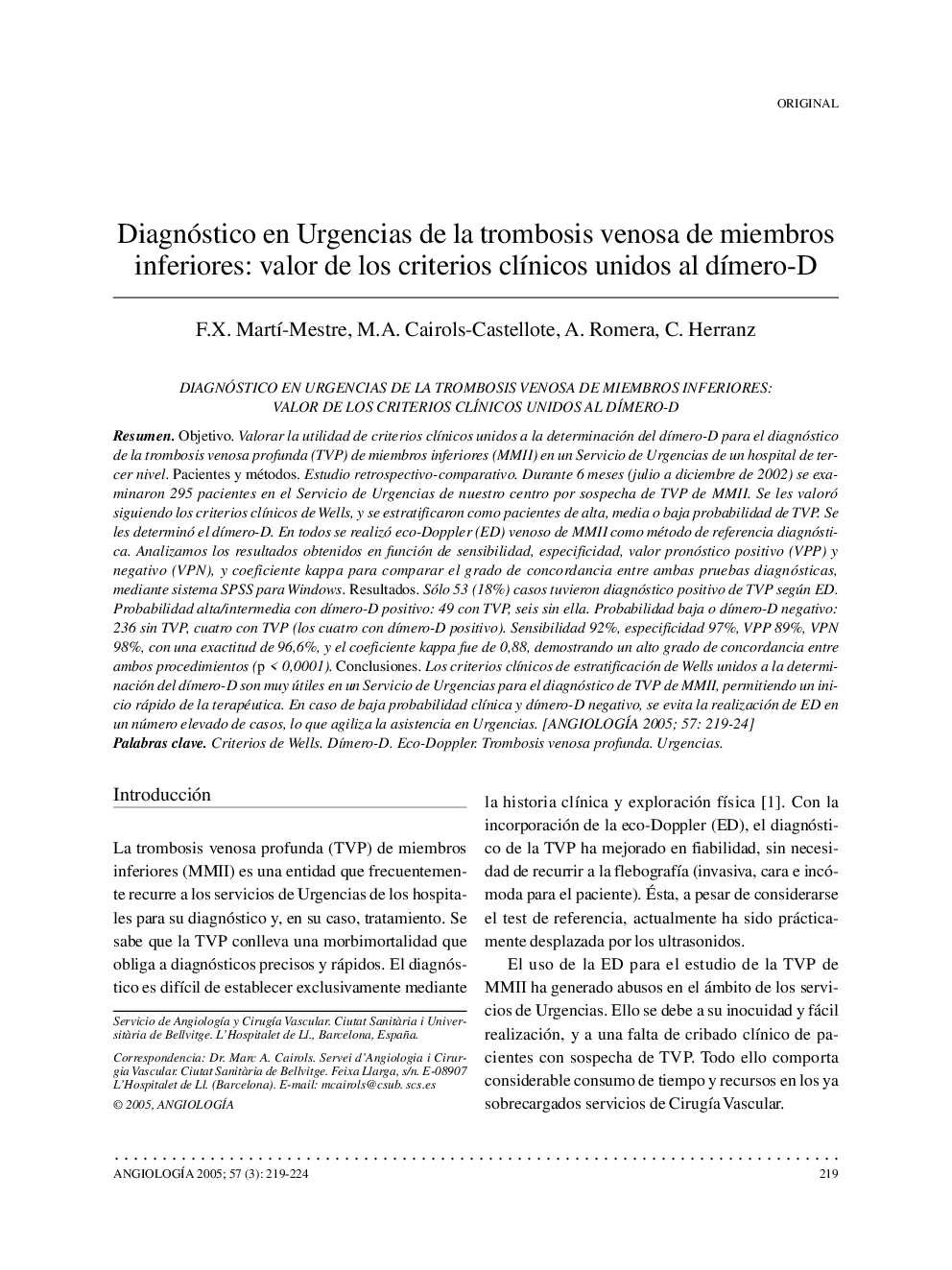| Article ID | Journal | Published Year | Pages | File Type |
|---|---|---|---|---|
| 9156831 | Angiología | 2005 | 6 Pages |
Abstract
Aim. To validate the role of clinical sings and D-dimer determination in evaluation of deep venous thrombosis (DVT) of lower limbs suspect in emergency room of high technology hospital. Patients and methods. Retrospective and comparative study since July 2002 to December 2002 about 295 patients looked after in emergency room in our hospital because of DVT of lower limbs suspect. We looked for Wells' clinical signs, and stratified patients in high, middle and low probability of DVT. We determined D-dimer in all patients evaluated. We achieved venous duplex ultrasound of lower limbs like gold-standard diagnosis. We diagnosed 53 DVT with this method. We evaluated the results in sensibility, specificity, positive predictive value (PPV) and negative predictive value (NPV), and kappa coefficient, with program SPSS for Windows. Results. High and middle probability with D-dimer positive: 49 with DVT, 6 without. Low probability or D-dimer negative: 236 without DVT, 4 with it (these with D-dimer positive). Sensibility 92%, specificity 97%, PPV 89%, NPV 98%, with an exactitude of 96,6%, and kappa coefficient of 0,88. It was demonstrated a high degree of concordance between gold-standard and tests evaluated (p< 0,0001). Conclusions. Wells' clinical signs and determination of D-dimer give good diagnosis approximation to DVT of lower limbs in emergency room. With low clinical probability of deep venous thrombosis and negative D-dimer determination is not necessary to achieve duplex for suspect deep venous thrombosis. [ANGIOLOGÍA 2005; 57: 219-24]
Keywords
Related Topics
Health Sciences
Medicine and Dentistry
Cardiology and Cardiovascular Medicine
Authors
F.X. MartÃ-Mestre, M.A. Cairols-Castellote, A. Romera, C. Herranz,
